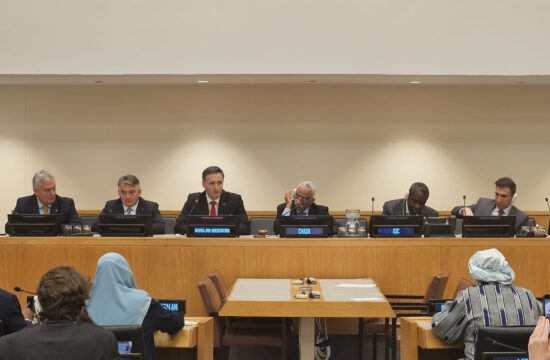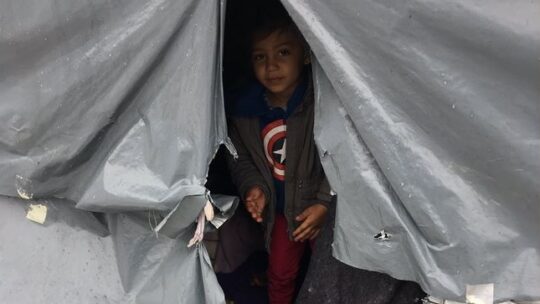
Ron Haviv, one of the worlds most renown photographers who captured bloody conflicts worldwide, is showing his never before seen images from the wars in former Yugoslavia at an exhibition called “Shadow of Memory” in Sarajevo’s City Hall.
Outlets take just one or two of the best photos from a photographer’s roll, which is how more than 200 war photos ended up in boxes for decades. They show a wide range of emotions and provide a more detailed picture of what war is really like.
The exhibition is part of the International theater festival MESS program, which focuses on memories of the war and it will remain open until May 9. Haviv told N1 that he took the photos out of the boxes and turned them into an exhibition because “it is incredibly important to remind people of the failures of the past to avoid making the same mistakes in the future.”
His images show – the same mistakes are made over and over again.
“If you put them (the photographs) in black and white, you can easily say this is World War Two,” Haviv said of the photos he took in Bosnia's wartime concentration camps.
When his pictures of inmates from the Bosnian Serb held concentration camps Trnopolje and Manjača were published, they triggered a worldwide outcry and the camps were closed down.
“But soon the world had forgotten about them and new ones were opened,” Haviv said.
Haviv also captured the confusion on the streets of Sarajevo the first day of war.
“April 6 was a day of amazing energy, confusion, chaos, nobody understood exactly what is happening,” he remembered.
“Some people thought it was all over at that point, that there will be no war.”
He followed the notorious Serbian paramilitary unit, led by late Zeljko Raznjatovic “Arkan,” when they crossed the border in 1992, took over the Bosnian town of Bijeljina and terrorized and killed the town’s Muslim Bosniaks.
He captured the hearth-braking aftermath of the Srebrenica genocide, during which more than 8,000 Muslim Bosniaks were systematically executed.
“There is no way to look at war as an observer or as somebody who was there and not have an emotional connection to what was happening,” Haviv explained.
The photographer discovered that some photos change their lives over time and this became most obvious as he observed the life of the photos he made in Bijeljina. His photo of a member of Arkan’s unit kicking the dead body of a middle-aged woman his comrades had just killed in front of her house is one of them.
“The main photograph has become intertwined with the historical collective memory of here, and it has been used in politics, education, art and all of these things,” he said.
The life of a photo is also the subject of a documentary Haviv is working on together with photojournalism professor, Dr. Lauren Walsh, which they named “Biography of a photo.”
So how did he cope with the traumas he experienced, considering everything he saw?
“I think that, without question, I was affected by what I saw. I was also able to understand that there was a purpose for me to be there,” he said.
He realized early on that his photos and his reporting were not changing anything on the ground immediately, but that they are creating a body of evidence – documents which will help hold people accountable.
“Having purpose helped me understand and enabled me to basically accept what I was seeing,” he explained.
Haviv said he knows that many people think that the war should not be talked about and that one should rather focus on the future. However, he stressed it is essential to also remember what happened and to show new generations what it was like.
“The war was serious, lives were destroyed, worlds were destroyed and I hope that the memory of those photographs can help the new generation when they go to vote, when they go to make decisions, to make the right decisions,” Haviv concluded.




